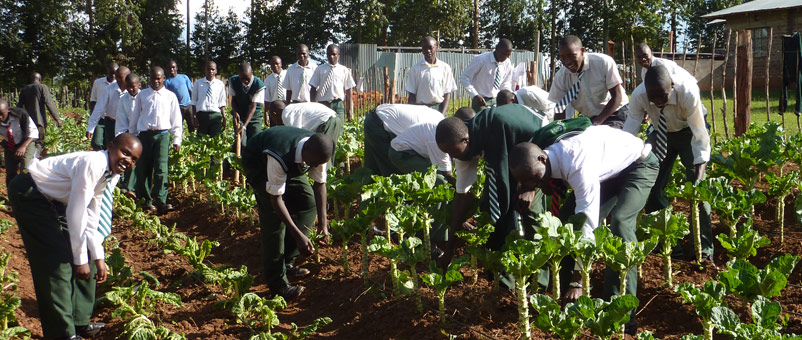Agriculture has finally become an “it” topic. Just this year, Inc. magazine named it one of the three main industries on the verge of disruption.
Urgent concerns like economic and environmental sustainability, climate change, and food security are forcing the agenda for feeding the future. . The advances that were revolutionary in the 1960s, are now insufficient.
Fortunately, the disruptive advances in new technologies and scientific developments from biotechnology, big data, the “Internet of Things” (IoT), engineering, and other non ag sectors are being applied to agriculture to produce food more efficiently, economically, and with better quality. Pessimism about the future is yielding to optimism as agriculture is changing in ways never before imaginable.
The cleantech era is giving way to agtech. Like never before, funders and innovators are flocking to the field, literally and figuratively. New technologies are being developed that would have seemed like science fiction 30 years ago — mobile phone technologies for farmers in the remotest parts of India and Africa, helping them monitor the weather and guiding them on what and when to plant. Cost effective water-efficient micro irrigation systems are being developed for farmers and are being subsidized by national governments like India. Aerial drones are being developed for agricultural applications. New crop breeding methodologies, and new nutritionally-rich crop varieties are being developed along with those resistant to the advances of climate change.
Funding schemes and sources also are changing and growing to finance new innovations. Until recently, total public and private global R&D investment growth for food and agriculture was relatively modest. Of about $50 billion last reported in 2008, most was for crop chemical inputs, farm machinery, and the food processing industry. Private equity investment was almost non-existent. In recent years, the landscape has changed dramatically. In 2012, private equity and venture capital investment in the agtech sector was estimated to be only US$200 million. Two years later, AgFunder reports that investment skyrocketed to reach $2.36 billion in 2014, a tenfold increase, and the pace is accelerating in 2015. Investment in biological products, crop and soil “climate smart” agricultural solutions–including precision agriculture – are among the most popular for investment. Government and NGO sources also are supporting major programs and new crowdfunding platforms are reaching new investors.
So what are the innovations that will drive the future?
Precision Agriculture
Today advanced data collection and analytics, software and hardware technologies, and internet-driven applications will increasingly provide farmers with the tools needed to apply the exact amount of inputs, at the right time and place in the most efficient, economical and sustainable way. Data being developed from weather, soil characterization, crops, and other agricultural variables is permitting better intelligence to drive software and hardware for agriculture. For example, GPS technology on tractors and combines allows farmers to map the precise range of soil types on their farms so that they can choose the right seeds and apply the right amount and type of fertilizers on their fields to achieve the best yields. Sensor technologies, software and metering technologies are supporting accurate timing and amount of water applications. New innovations continue to be developed to advance precision farming for small holder and large scale farmers.
Robotics and mechanization
Robotics and mechanization are advancing to solve increasing cost and reduced availability of labour, and to increase precision and efficiency. New robotics for operations such as thinning, spraying, and harvesting are being developed. Drone technology continues to advance along with the potential agricultural applications globally across cropping systems for spraying, diagnostics and other operations.
Micro Irrigation
Water scarcity and quality are key concerns for our future food supply as global water demand will increase 50 percent, by 2030 with agriculture alone requiring more than what can be sustained to feed the world, Fortunately, drip irrigation applications are now being deployed that can save up to 60 percent more water than other methods. Major global companies have been working with NGO partners to bring down to the cost of this technology, to allow access for smallholder farmers. Check out this interview with iDE that shows how this is being done.
Biologicals
As the interest in a sustainable bioeconomy soars, biologically based crop inputs hold high promise for both smallholders and large scale agriculture. New plant biostimulants to enhance crop growth and quality, and biocontrol products to replace or enhance traditional herbicides, fungicides, and insecticides are being developed at an accelerated pace compared to the past. Future products will be customized for specific environments and to integrate with traditional products to improve their effectiveness and reduce potential environmental impact.
Today’s science, technology, and diagnostic tools provide know-how. New funding and investment provide the capital, and a new age of entrepreneurs eager to provide solutions is evolving. There are many challenges ahead, but the future is becoming brighter for producers, farmers, consumers and the world at large.
If you would like to find out more, contact Bob on [email protected] or follow him on Twitter: @AndMoreAssoc



